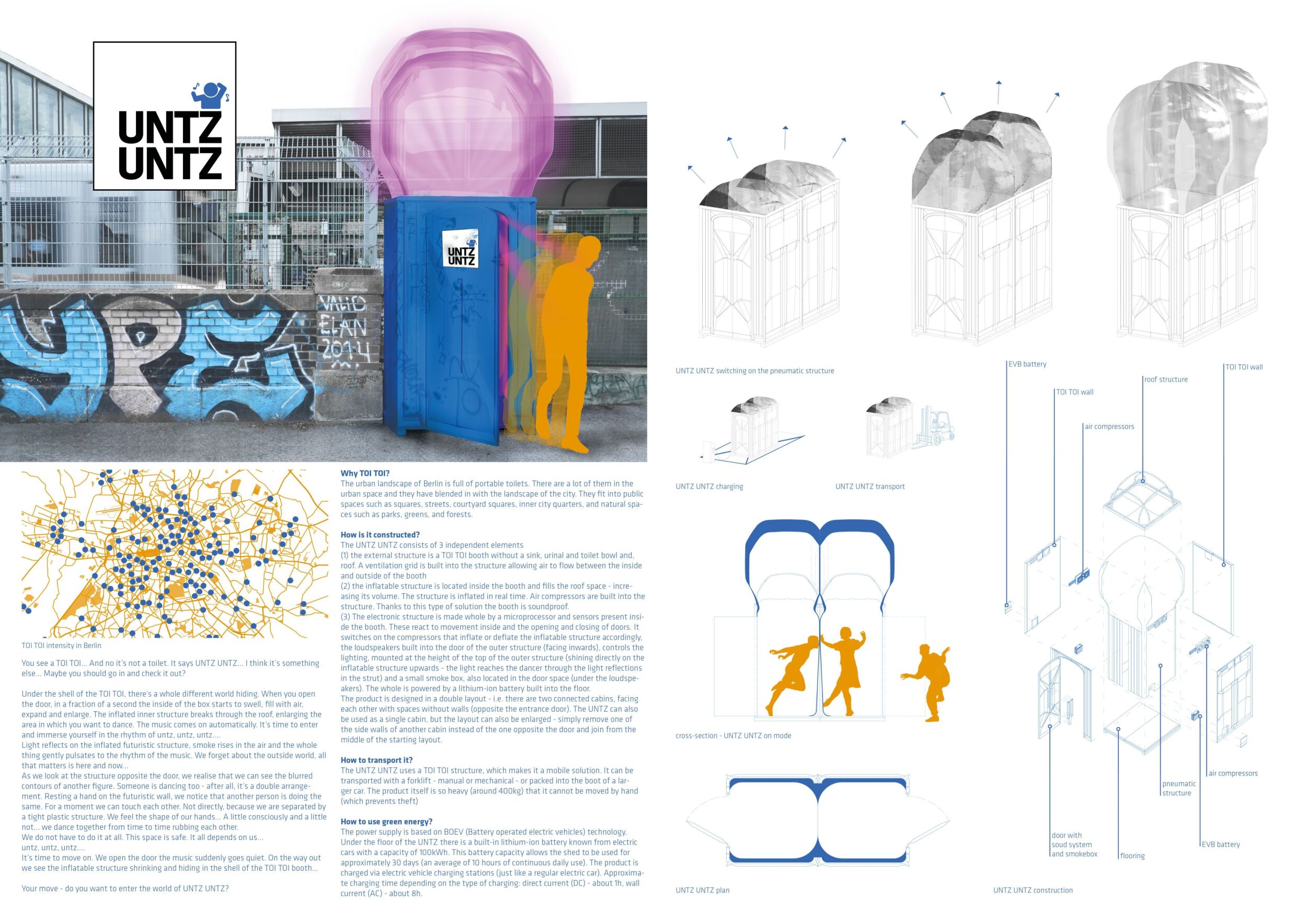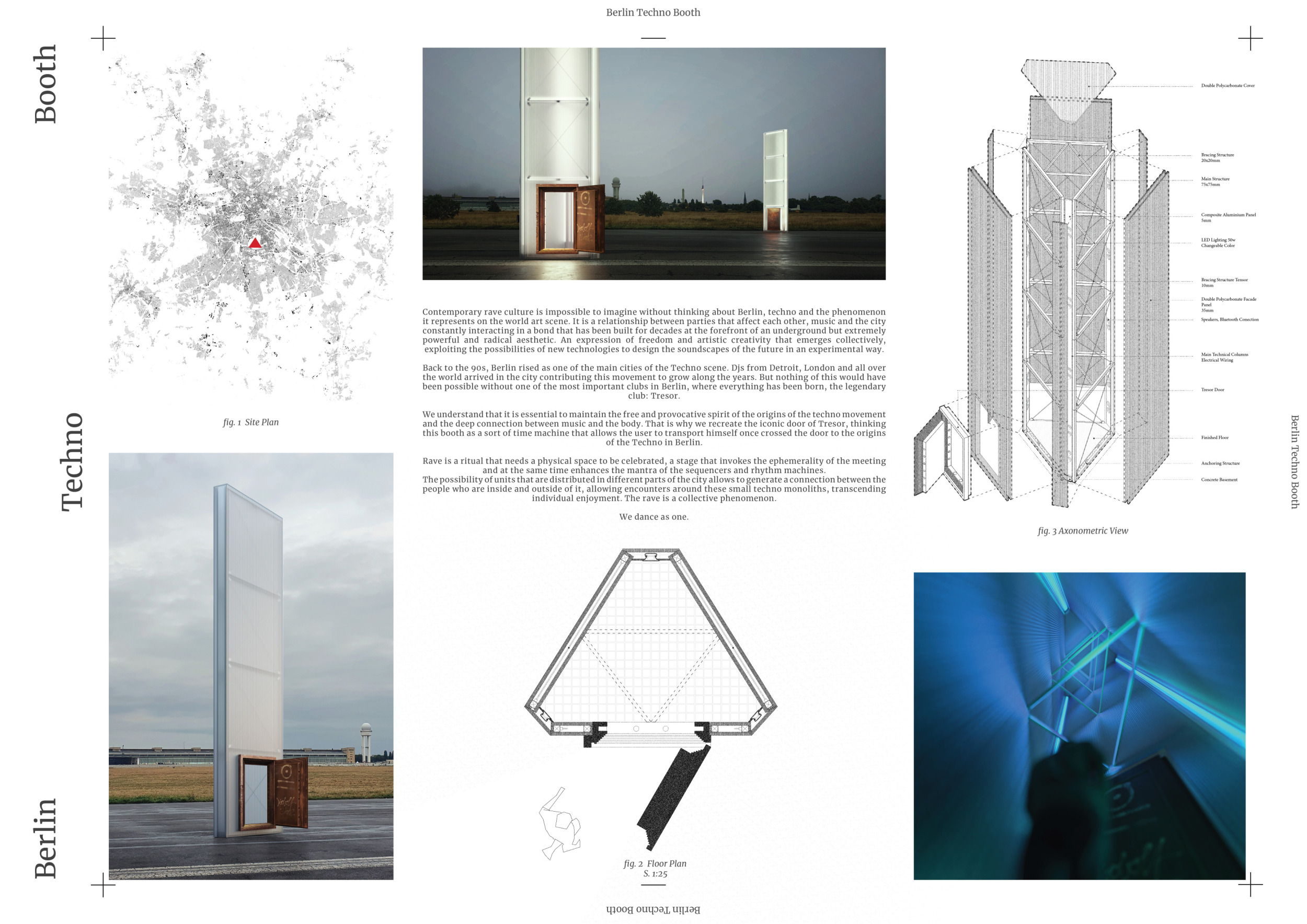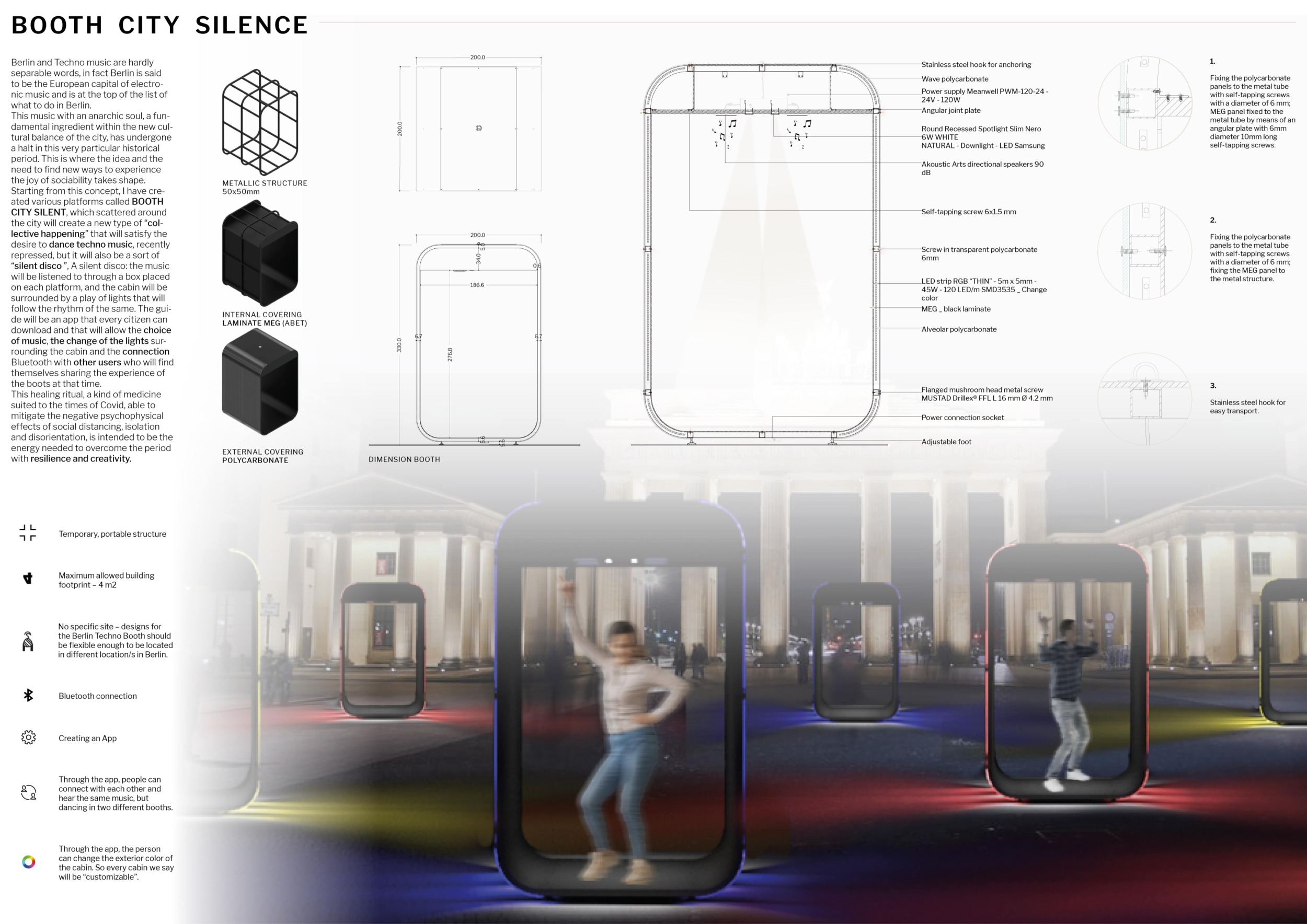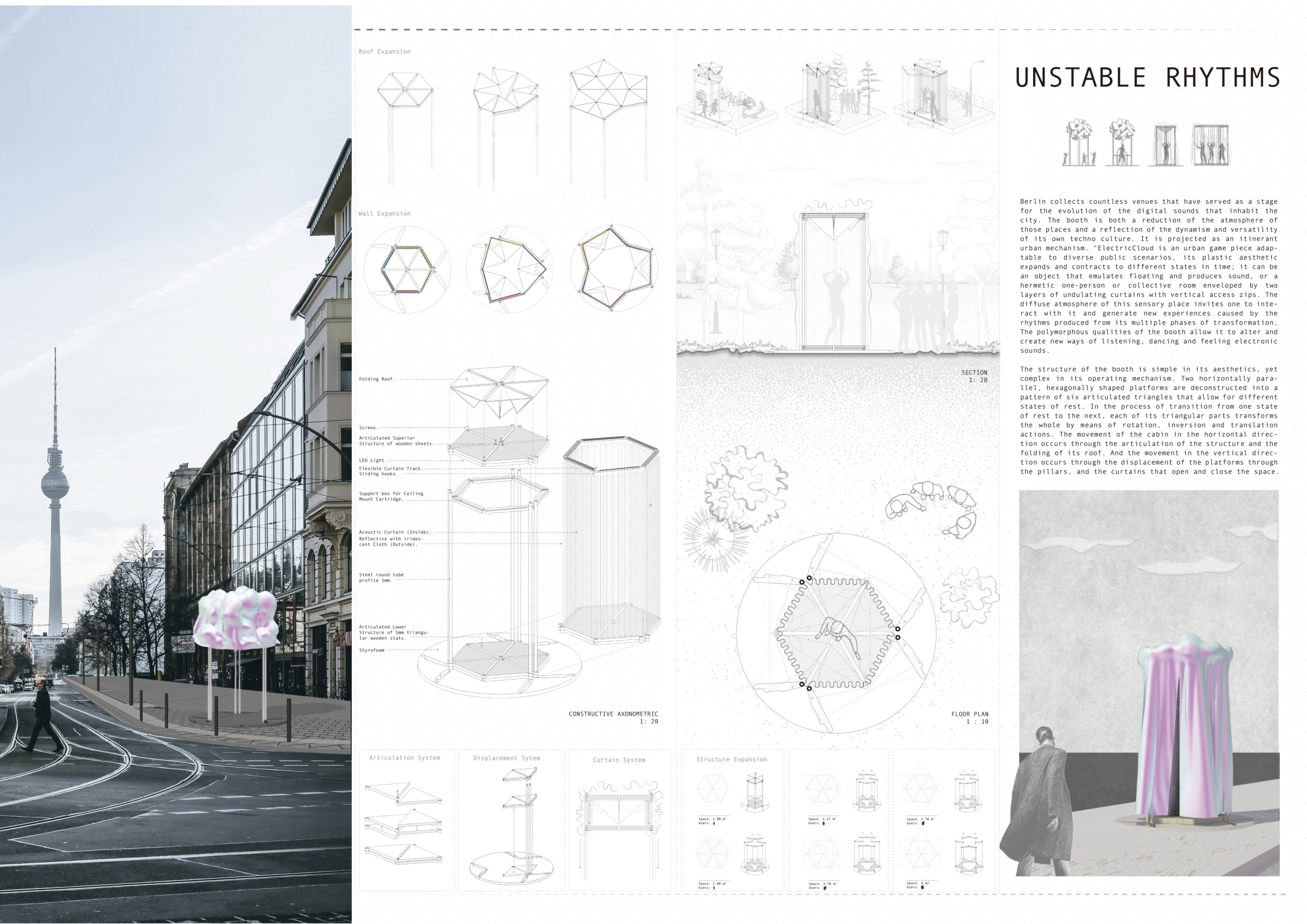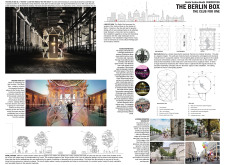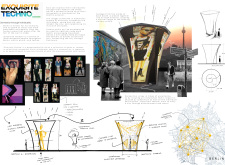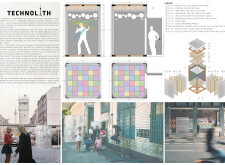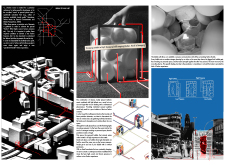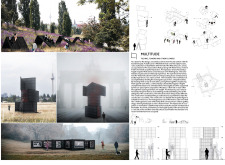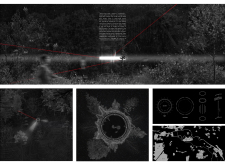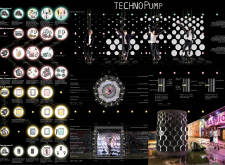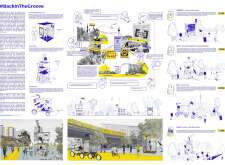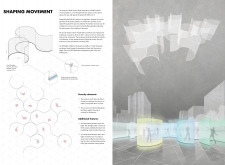Introduction
The Berlin Techno Booth Competition is part of Bee Breeders’ Small Scale Architecture Appreciation Movement showcasing small projects that contain big ideas. Designers were tasked with proposing a temporary structure that, in light of the ongoing pandemic, could accommodate a single dancer, allowing them to dance and enjoy Berlin’s techno music in a socially-distanced fashion. The only constraint was that the structure has a maximum area of 4 m2.
Berlin club culture is a bedrock to the techno music establishment. Venues that were once locales for illegal raves have transformed into popular businesses known internationally for showcasing original interpretations of techno.
As with the majority of social venues around the world, techno clubs and raves have been forced by governments to shut their doors over the past two years in an attempt to limit the spread of the coronavirus. This competition was a light-hearted initiative to generate new ideas for activating the streets of Berlin with techno music. While there were no specific requirements for design submissions, participants were encouraged to express their creativity through thoughtful and innovative design ideas.
Bee Breeders worked with an outstanding international jury of architects and street artists: Jürgen Mayer H., founding partner of Berlin-based J.MAYER.H und Partner; AKUT, Berlin-based urban contemporary artist and photographer; Dan Dorocic, member of design & architecture collective ON/OFF; Gonzalo Lopez, PhD candidate at Polytechnic University of Madrid and partner of knitknot architecture; Kerim Miskavi, architect and founder of Istanbul-based MAS – Miskavi Architecture Studio; Nicolas Sterling, and Elke Sterling-Presser, co-founders and Directors of Sterling Presser Architects and Engineers in Berlin.
Bee Breeders and its jury panel would like to thank all the designers that participated in this competition.
We sincerely thank our jury panel
for their time and expertise
Jürgen Mayer H
founding partner of J.MAYER.H und Partner
Germany

Nicolas Sterling
Co Founder and Director, Sterling Presser Architects and Engineers
Germany

Elke Sterling-Presser
Co Founder and Director, Sterling Presser Architects and Engineers
Germany

Falk Lehmann aka AKUT
urban contemporary artist and photographer
Germany

Dan Dorocic
designer ON/OFF
Germany

Kerim Miskavi
Miskavi Architecture Studio - MAS
Turkey

Gonzalo Lopez
knitknot architecture
USA

1st Prize Winner +
BB STUDENT AWARD
BB STUDENT AWARD
Re-Unite


Actively participating in competitions helps to broaden the mind and understand architecture from different perspectives. As students, it is particularly important because we easily stick to thinking in one way which is taught at school.
Read full interviewJury feedback summary
Largely a favourite among the jurors, “Re-Unite" proposes a flexible, customisable structure inspired by scaffolding. It consists of triangular and square prototypes that can be wrapped in translucent fabric and expanded according to the needs and number of participants. The jury praised the proposal for the intelligence of its simple modularity and its sensitivity to both connectivity and separation.
2nd Prize Winner
SNB-F1

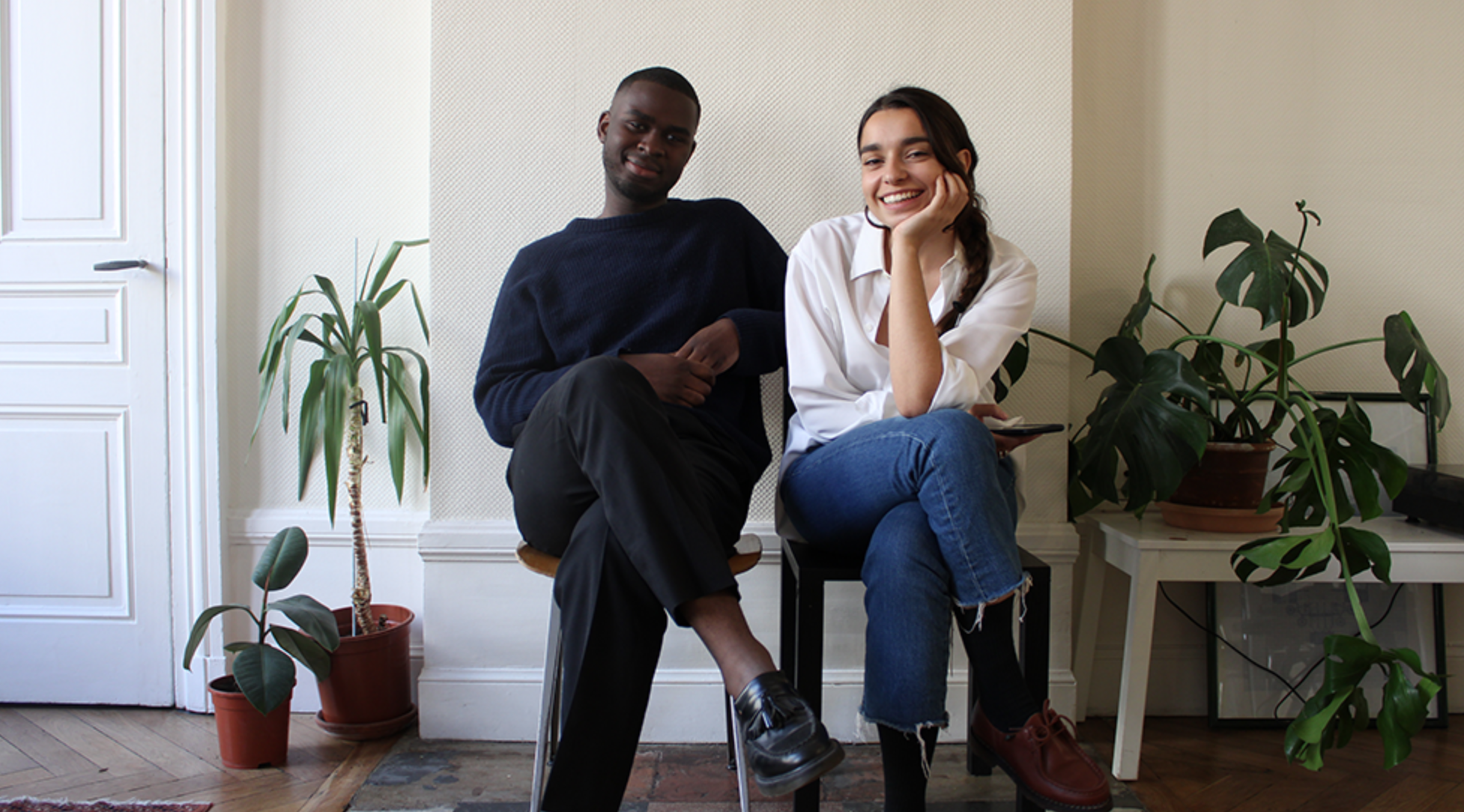
Participating in architectural competitions is an opportunity to look back at our practice and philosophy. It showcases our work and the way we think. As students, we can escape from scholar or corporate projects. It gives us the freedom to venture into our very own obsessions. It sharpens the way we draw by testing alternative ways of representing architecture. Participating in architectural competitions is also constantly questioning urban and social problematics while seeking for the simplest answer. It is the chance for radical ideas.
Read full interview France
France
Jury feedback summary
“snb-f1” (a name combining SFB radio with Funktion-One sound system) is a project for an autonomous and itinerant device dedicated to techno music inspired by French DJ Laurent Garnier who once described techno music as generated by “taking machines out of their context to make futuristic music with them.
3rd Prize Winner
Invisible Bodies

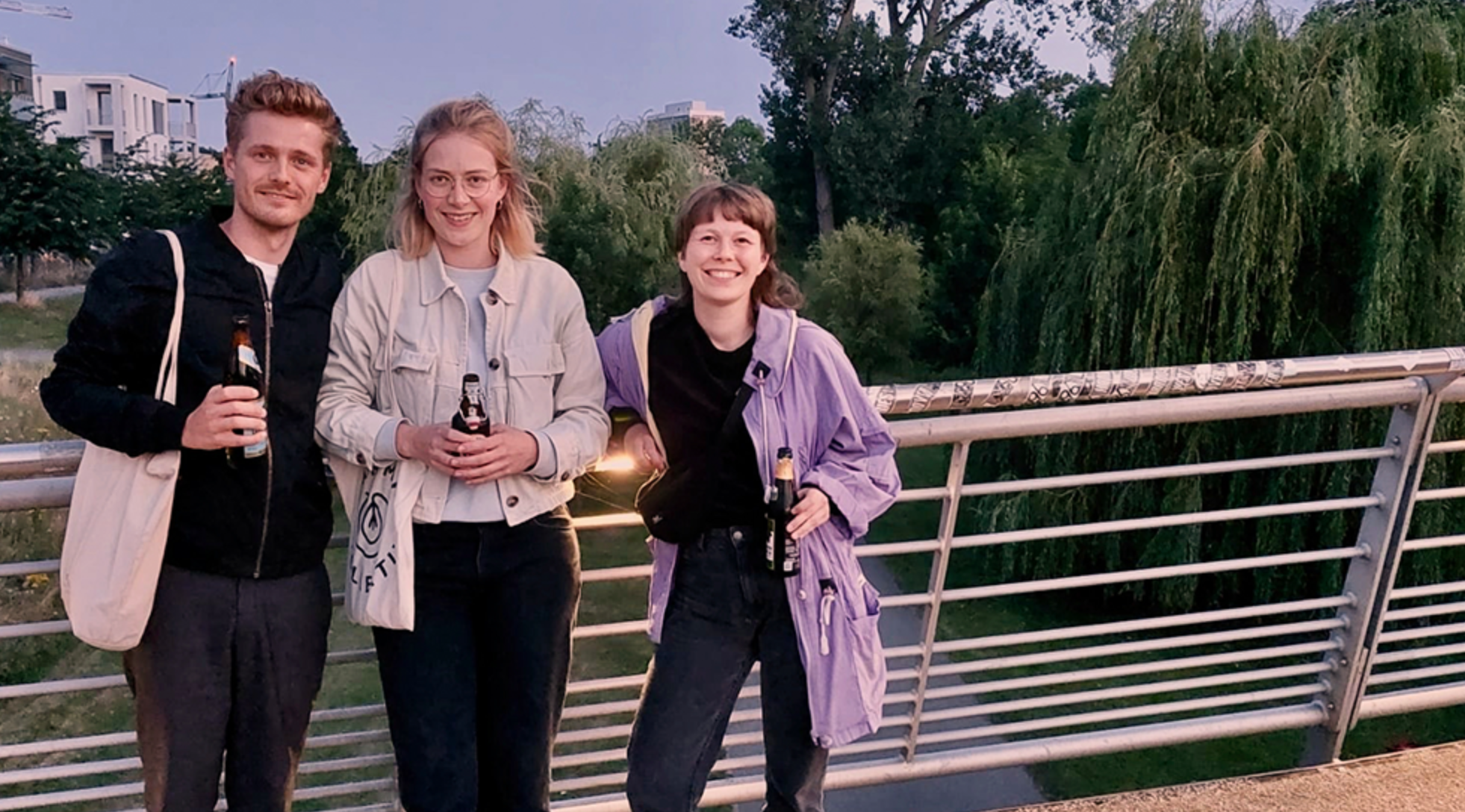
It was our first collective participation in an architecture competition and, to be honest, we were only looking for a reason to work together on a project.
Read full interview Germany
Germany
Jury feedback summary
‘Invisible Bodies’ is a proposal for a dance box that can be located throughout the city while remaining invisible, traced via mobile application. From the exterior, it is an anonymous structure clad in mirrors; the interior presents an intimate space enclosed by organic, soft shapes that are the colour of human skin. The jury comments, “‘Invisible Bodies’ is a poetic and original response to the brief.
BB GREEN AWARD
Tanzblock
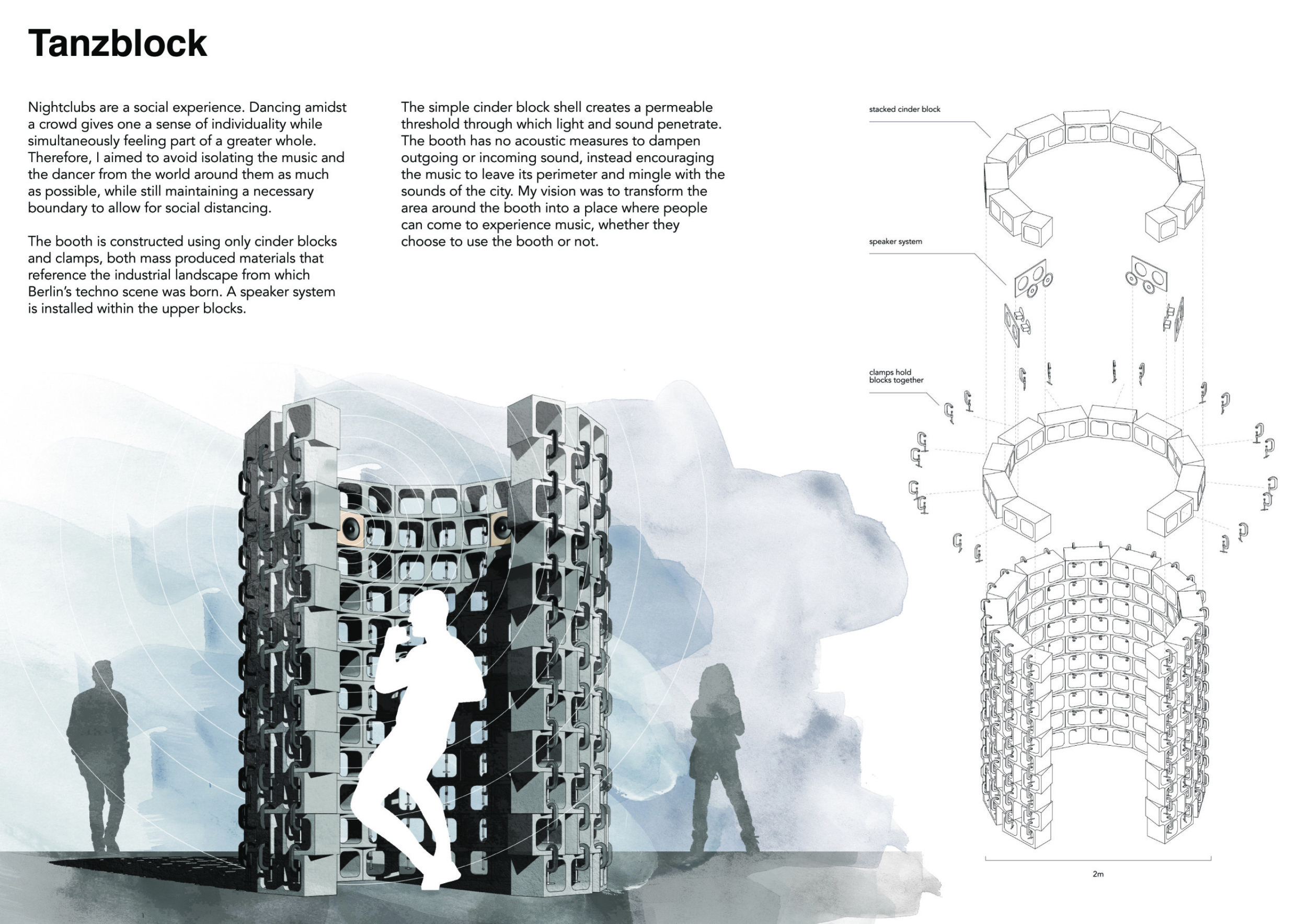
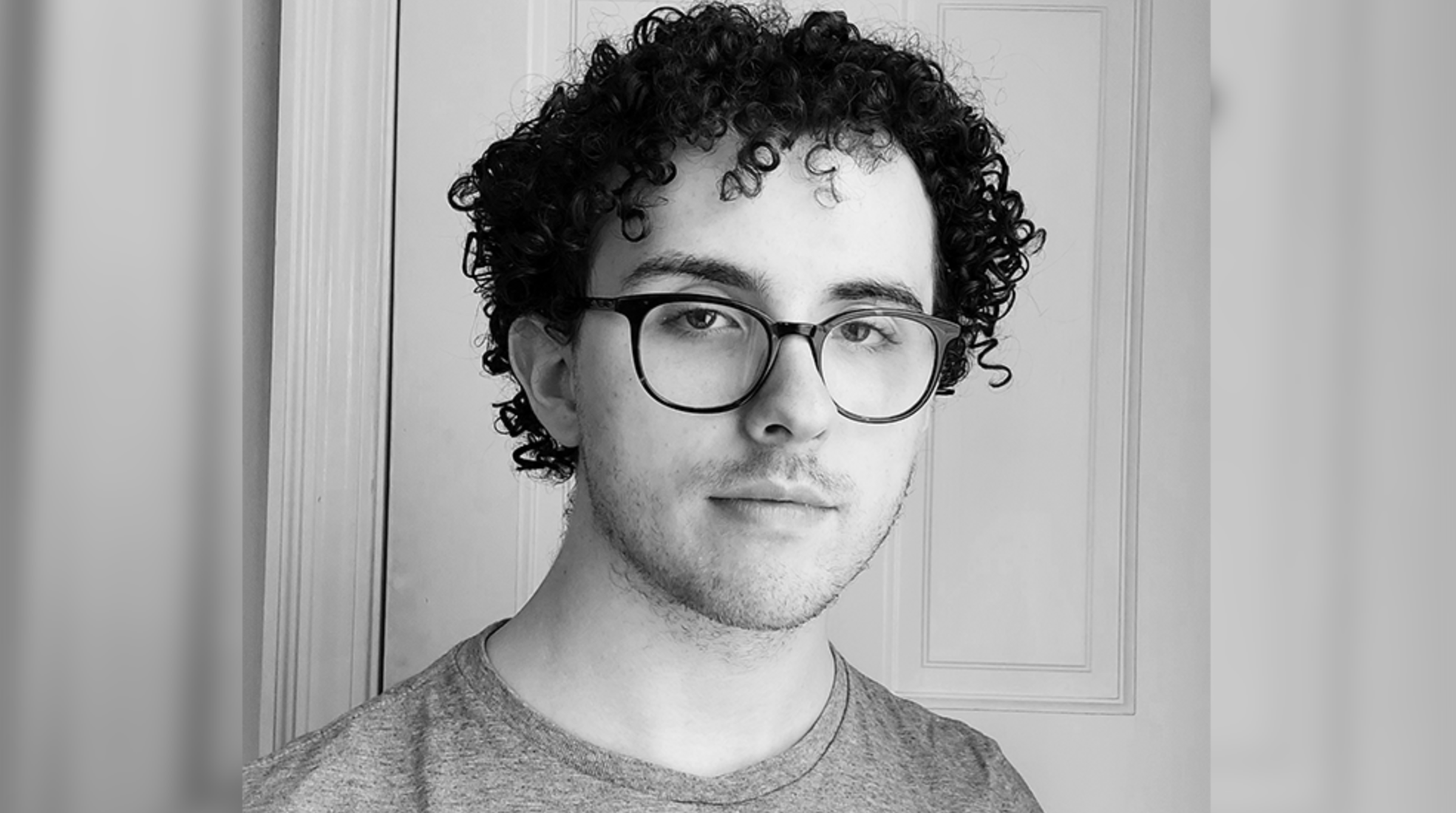
I enjoy the creative freedom that competitions give, as well as the diverse range of settings and scenarios that competitions can expose me to.
Read full interviewHonorable mentions
Shortlisted projects
